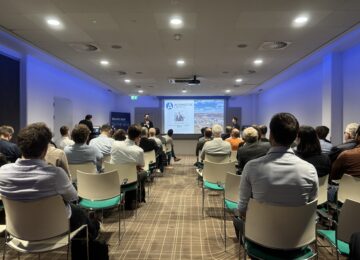Sectoral heat storage action plan from Individual to Industry
We all come into contact with it, and it offers us many conveniences: heat and cold storage. Think of home boilers or freezers, for example. From small to large-scale applications, and from low to high temperatures, heat storage is crucial for a faster, cheaper and more sustainable energy transition. In the Netherlands, however, the rollout of thermal storage has been slow due to various barriers and obstacles. Therefore, Energy Storage NL has prepared a heat storage action plan, which was recently presented to the Ministry of Economic Affairs and Climate. This contains a series of opportunities and recommendations. The big questions are: do we have the incentives right and how do we reward flexibility?
Individual heat storage
Individual heat storage systems typically store hot water up to 70 degrees Celsius, both underground and above ground in tanks. A major obstacle to these systems is current legislation that does not view heat storage positively or even works against it. Indeed, in new construction projects, one gets points for each sustainability step (according to the BENG scheme), which makes them worth more. Heat storage, however, is seen as heat loss and therefore scores no points. The industry would like to see a fair valuation of heat storage and a calculation method based on kilograms of CO2 saved rather than energy efficiency labels.
Collectively
The Netherlands leads the world in deep underground thermal energy storage (CHP). These systems and other collective systems typically store heat up to 90 degrees Celsius. Despite the strong interest, implementation is proceeding with difficulty because of complex integration into existing local energy systems and competitive natural gas prices. There is a strong need for a system integration subsidy or government risk guarantee to free up more public and private capital. This, in turn, would pave the way for more engineering capacity and investment in knowledge.
Industry
Industrial heat storage has a heat range of several hundred degrees to, in extreme cases, above 1,000 degrees Celsius. The latter is mainly seen in the steel industry. In the Netherlands, there is great potential for heat storage in the process industry, - for example, food and chemicals - with typical processes between 100 and 400 degrees Celsius. Besides a lack of general awareness of the possibilities, the sector is struggling with longer payback times than the usual 2 to 5 years used by Dutch industry. The current proposal to add high-temperature heat storage to the SDE++ scheme is an important step in the right direction and will accelerate the sustainability of Dutch industry.
We just have to want to do it
Fair treatment of heat storage in the built environment, support for system integration of collective systems and addition to the SDE++ for industry: these three measures can remove the biggest barriers to heat storage in the Netherlands. This brings a fully sustainable society much closer. We can do it, we just have to do it yet!
Sacha Schmitter
Project Manager knowledge center - Energy Storage NL
This column was published in Storage Magazine June 2024





